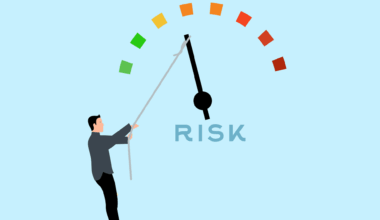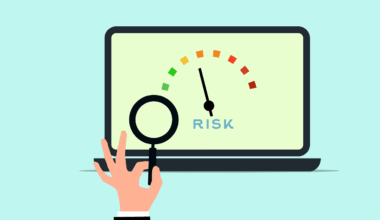Common Challenges When Implementing Credit Risk Frameworks
Implementing credit risk frameworks presents several challenges that institutions must navigate. First, understanding the regulatory landscape is critical. Regulatory requirements can be complex and vary greatly by jurisdiction, leading to confusion in compliance. Organizations must invest time and resources in ensuring their frameworks meet these diverse regulations. Second, lack of data integrity poses a significant issue. Poor-quality data can lead to inaccurate risk assessments, resulting in inadequate responses to potential credit issues. To mitigate this risk, firms should prioritize data validation and establish robust data governance policies. Third, a common challenge is aligning credit risk frameworks with existing business processes, which often requires overcoming organizational silos. Collaboration across departments is necessary to create a cohesive approach that integrates risk management with operational activities. Fourth, inadequate training of staff on the newly implemented frameworks can lead to poor execution. Training programs should be tailored to various levels of employees to ensure everyone understands their roles in the risk management process. These considerations are vital in effectively navigating the complexities of implementing a comprehensive credit risk framework.
Another prevalent challenge in implementing credit risk frameworks is the evolving nature of credit risk itself. Factors such as market volatility, economic downturns, and changing consumer behavior can impact credit risk profiles. Institutions need to develop agile frameworks that can adapt to these changes swiftly. This often involves continuous monitoring and updating of risk models to reflect current conditions and emerging threats. Moreover, organizations may also face difficulties in acquiring the necessary technological infrastructure to support these flexible frameworks. Adopting advanced analytics and machine learning solutions can enhance predictive capabilities but can also be resource-intensive and complex to integrate. Financial institutions should consider investing in scalable technology solutions that can accommodate growth and change. The integration of various technologies must also be seamless to avoid disruptions in operations. Furthermore, establishing a culture of risk awareness throughout the organization can be challenging. It requires commitment from top management and the embedding of risk considerations into decision-making processes. Celebrating successes and learning from failures in risk management can foster this culture and ensure all employees feel responsible for credit risk management.
Stakeholder Engagement and Communication
Engaging stakeholders at every level is crucial for successfully implementing credit risk frameworks. However, this engagement can often encounter roadblocks, particularly when there are differing interests among stakeholders. Different departments may have varying priorities, leading to conflicting objectives that can hinder progress in adopting integrated credit risk frameworks. To overcome these challenges, institutions should facilitate open communication among all parties involved. Regular meetings, workshops, and updates can help align objectives and foster collaboration. Additionally, clearly articulating the benefits of the framework for various stakeholders can encourage wider acceptance. Another communication challenge is ensuring all employees understand their roles in the credit risk management process. A lack of clarity can result in misunderstandings and inconsistent practices. Providing comprehensive training programs can bridge this knowledge gap and promote a unified approach to credit risk management. Furthermore, institutions must continuously seek feedback from stakeholders to refine and improve risk frameworks. Engaging stakeholders in the process can also promote a culture of collaboration and support for risk initiatives, essential for maintaining ongoing commitment to credit risk management efforts.
Another significant challenge pertains to the complexity of risk models utilized within credit risk frameworks. Developing accurate and reliable models requires significant expertise and resources. Many institutions find that current models are insufficient to capture the intricacies of their credit portfolios. This often results in outdated or inappropriate assessments of risk. Subsequently, institutions must regularly validate and recalibrate these models to ensure their effectiveness. This process can be resource-draining, requiring ongoing testing and revisions. Additionally, models must be aligned with the institution’s risk appetite and be in compliance with regulatory requirements, making model governance essential. The requirement for transparency in the modeling process is also paramount, as stakeholders need to understand how risk assessments are derived. Without transparency, organizations risk losing stakeholder confidence. Maintaining documentation and providing clarity around the methodologies used in modeling can help demystify the processes and foster trust. A further hurdle in risk modeling involves the balance between sophistication and usability; models must be complex enough to capture significant factors yet simple enough for users to implement effectively.
Integration of Credit Risk Frameworks
Integrating credit risk frameworks into an organization’s existing risk management infrastructure poses unique challenges. The integration process must be seamless to avoid disruptions to ongoing operations. Often, existing systems may not readily accommodate new frameworks requiring extensive customization and potential re-engineering of processes. This can lead to additional costs and delays that organizations must carefully manage. Moreover, organizations frequently encounter a skills gap when it comes to implementing new frameworks. Staff members may lack the necessary knowledge to operate complex risk management systems effectively. This necessitates comprehensive training and possibly even hiring new personnel with the requisite skill sets to ensure successful implementation. Another aspect to consider is the alignment of risk frameworks with overall business strategies. Credit risk frameworks must not only comply with regulatory requirements but also support organizational goals. Failure to align these frameworks with strategic objectives can lead to missed opportunities and inefficient resource allocation. Continuous evaluations and adjustments are necessary to ensure that credit risk frameworks work in harmony with business operations.
Furthermore, maintaining a robust risk governance structure is essential for the successful implementation of credit risk frameworks. Leadership commitment is vital, as strong governance requires directing resources and attention towards risk management initiatives. Without adequate support from upper management, initiatives may falter due to lack of prioritization. Moreover, establishing clear roles and responsibilities is essential to create accountability throughout the organization. Ensuring that all employees understand their responsibilities in credit risk management enhances the framework’s credibility and effectiveness. Regular audits and evaluations can help confirm that risk management processes are functioning as intended, but these practices must be embedded into the organization’s culture. Another hurdle is developing a comprehensive risk assessment process that aligns with the organization’s risk tolerance and regulatory obligations. This approach should include detailed documentation of standardized procedures to provide clear guidance. Creating a risk-aware culture where employees prioritize risk considerations in their daily activities can amplify the effectiveness of credit risk frameworks significantly. Empowering employees with the necessary tools and training is crucial in establishing sustainable risk practices.
Conclusion: Moving Forward
To conclude, addressing the common challenges in implementing credit risk frameworks requires strategic planning and dedicated effort. Financial institutions must approach this process by handling regulatory compliance, data integrity, and stakeholder communication effectively. Moreover, continuous learning and adaptation are key to ensuring these frameworks remain robust and responsive to changing risk landscapes. Organizations must prioritize investment in technology and staff training, fostering a culture of risk awareness and collaboration. This combined approach will not only help overcome challenges but also empower institutions to manage credit risk proactively. Additionally, creating clear governance structures and prioritizing alignment with business objectives will enhance the overall efficiency of risk management. Implementing credit risk frameworks is not merely about compliance; it is also an opportunity to enhance decision-making, improve risk assessments, and ultimately achieve better financial outcomes. As institutions strive to innovate and refine their strategies, an unwavering commitment to effective risk frameworks will be a critical component in thriving amidst uncertainties and complexities within the financial landscape. These frameworks will serve as the backbone for sustainable growth and resilience in an increasingly dynamic market.


